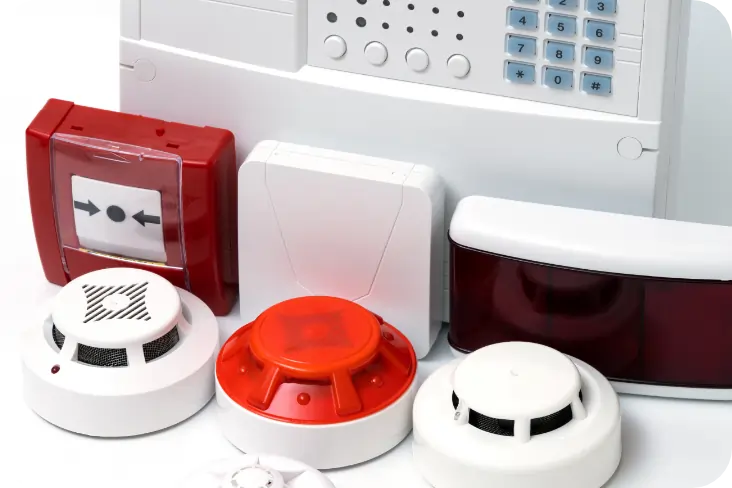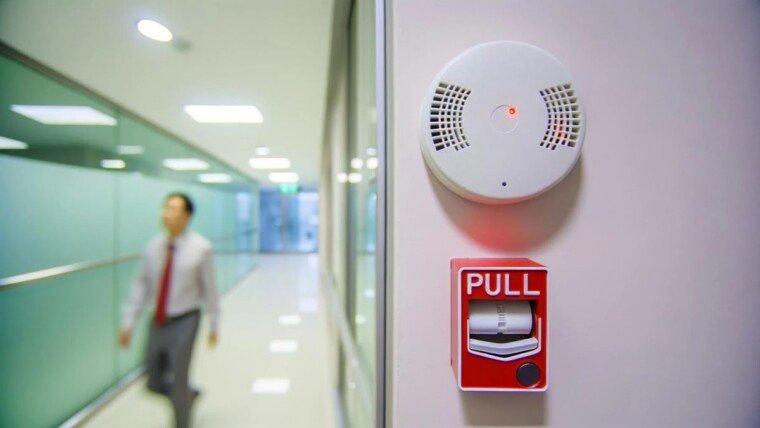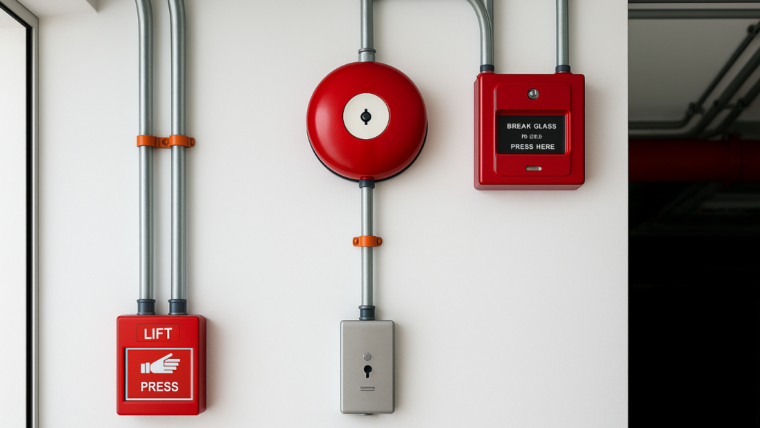In any commercial building, safety isn’t just a priority—it’s a legal responsibility. A properly installed and maintained fire alarm system is not only essential for protecting life and property but also crucial for meeting fire safety regulations. Whether you’re constructing a new office space or upgrading an outdated system, understanding the process of fire alarm installation can help ensure everything is done correctly, efficiently, and up to code.
In this guide, we’ll walk you through the step-by-step process of fire alarm installation in commercial buildings—from planning to commissioning—and highlight what to expect during each phase.
Step 1: Conduct a Fire Risk Assessment
Before any equipment is installed, a comprehensive fire risk assessment must be carried out. This evaluation identifies potential fire hazards, the likelihood of ignition, and the building’s evacuation strategy. It helps determine the required level of alarm coverage—ranging from manual systems to fully automatic detection networks.
In densely populated urban areas, the demand for reliable and regulation-compliant fire alarm installation in London continues to rise. A risk assessment forms the backbone of a compliant and tailored alarm system that protects both property and personnel.
Step 2: Design the System According to Standards
Once the risk assessment is complete, the system must be designed in line with UK fire safety standards, specifically BS 5839-1 for commercial buildings. Key elements of system design include:
-
Type of system (conventional, addressable, wireless)
-
Number and placement of detectors
-
Alarm zones and coverage
-
Control panels and communication links
-
Emergency lighting and fire doors integration
The design should also consider business operations, building layout, occupancy, and escape routes. Working with professionals at this stage ensures that the design meets all legal and functional requirements.
Step 3: Choose the Right Components
A fire alarm system is only as good as the components it’s made of. Choose reliable and certified products such as:
-
Smoke detectors (ionization, optical, or dual-sensor)
-
Heat detectors (rate-of-rise or fixed-temperature)
-
Manual call points
-
Audible and visual alarms
-
Control and indication panels
-
Power supplies and battery backup
Ensure all parts are compatible and suitable for the specific environment, such as kitchens, server rooms, or manufacturing floors.
Step 4: Professional Installation by Certified Experts
Once the design and equipment are finalized, the system is ready for installation. This should always be handled by certified fire alarm installers, as incorrect wiring or component placement can result in false alarms or failure during emergencies.
Many commercial clients opt for companies that offer bundled services—including security system installation in London—to integrate fire alarms with CCTV, access control, and emergency lighting systems for a complete safety solution.
Key installation activities include:
-
Running cabling and conduits
-
Mounting detectors and alarms
-
Installing control panels and power systems
-
Programming the system per design specifications
Step 5: Testing and Commissioning
After installation, thorough testing and commissioning are critical. This step ensures the system works as intended, all devices communicate correctly, and alerts are triggered appropriately.
Commissioning includes:
-
Sound level testing of alarms
-
Smoke and heat simulation tests
-
Manual call point functionality check
-
Power and backup battery tests
-
System integration with other safety systems
Upon successful testing, a certificate of compliance is issued, which may be required by local authorities or insurance providers.
Step 6: Staff Training and Handover
Even the most advanced fire alarm system is ineffective if staff don’t know how to use it. As part of the handover process, the installer should provide:
-
Basic operational training
-
User manuals and documentation
-
Emergency response procedures
-
Maintenance schedules
Training empowers staff to respond appropriately in case of a fire and ensures system longevity.
Step 7: Regular Maintenance and Legal Compliance
Fire alarm systems in commercial buildings are subject to routine inspections and maintenance under British Standard BS 5839-1. Neglecting these duties not only puts lives at risk but could also result in legal action.
Scheduled maintenance includes:
-
Functional testing of alarms and detectors
-
Inspection of control panels and batteries
-
Review of alarm logs
-
Replacement of faulty components
Ensure a maintenance contract is in place with a professional provider to remain compliant and protected.
Frequently Asked Questions (FAQs)
Q1: How often should commercial fire alarms be tested?
Weekly user tests and bi-annual professional maintenance are recommended to meet compliance standards.
Q2: Can I install a fire alarm system myself?
It’s strongly advised to use certified professionals to ensure the system is safe, reliable, and compliant with UK laws.
Q3: What’s the difference between addressable and conventional fire alarm systems?
Addressable systems pinpoint the exact location of a trigger, while conventional systems divide the building into zones.
Q4: How long does fire alarm installation take?
Depending on building size, it can take from a few days to several weeks. Design and compliance stages also add time.
Q5: Can a fire alarm system be integrated with security systems?
Yes. Integration with CCTV, access control, and emergency lighting enhances overall safety and efficiency.
Secure Your Building with Confidence
Installing a fire alarm system in your commercial property is not just a box-ticking exercise—it’s a critical step toward safeguarding lives, assets, and business continuity. From design and installation to training and maintenance, every stage must be handled with precision and care.
If you’re looking for trusted professionals for fire alarm installation in London or a provider that also specializes in security system installation in London, we’re here to help.
Book your appointment today with our certified fire safety experts and get a tailored solution that meets all compliance standards and keeps your building protected 24/7.
Read more: Can I Install Home Automation Myself, or Should I Hire a Pro?




